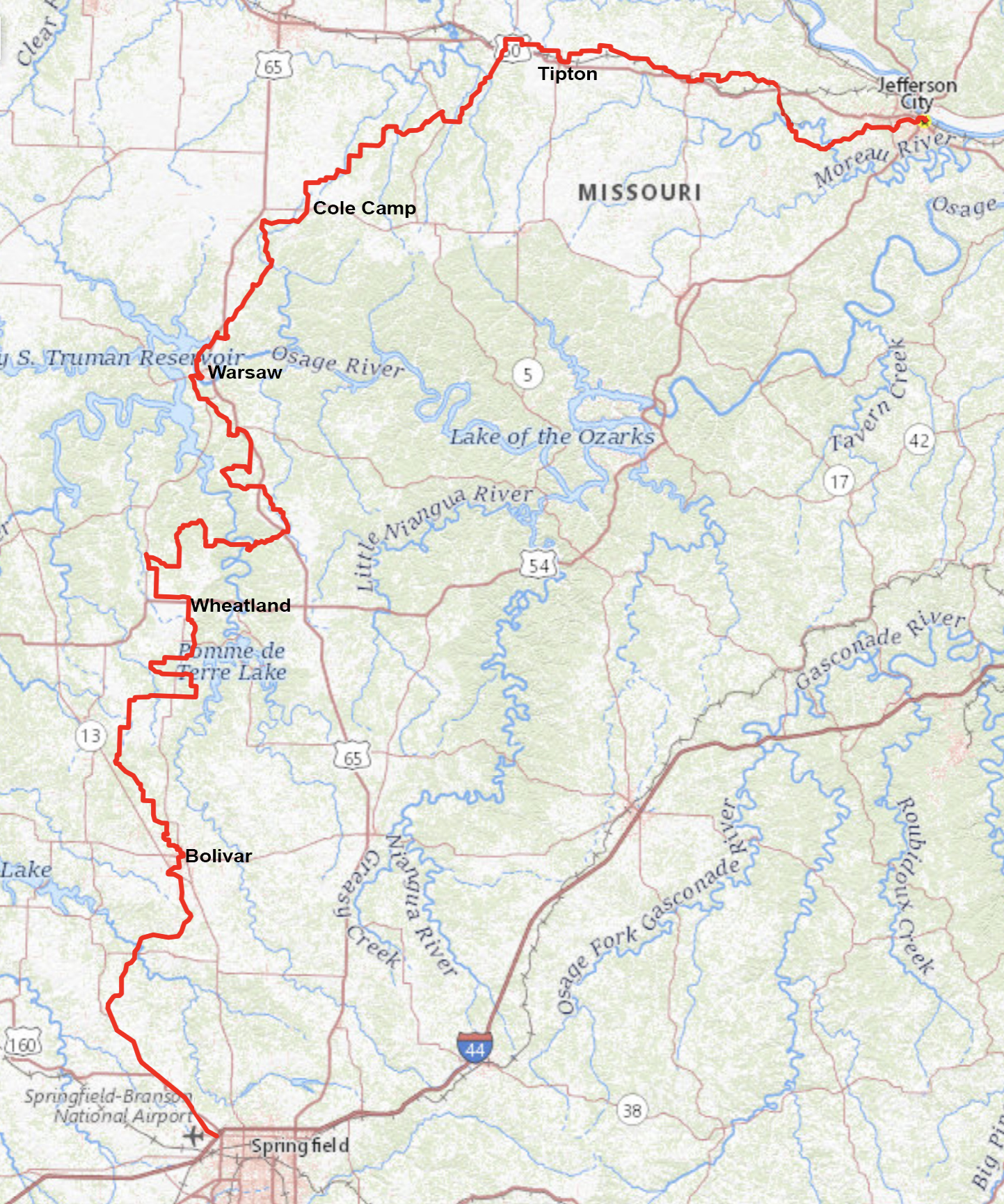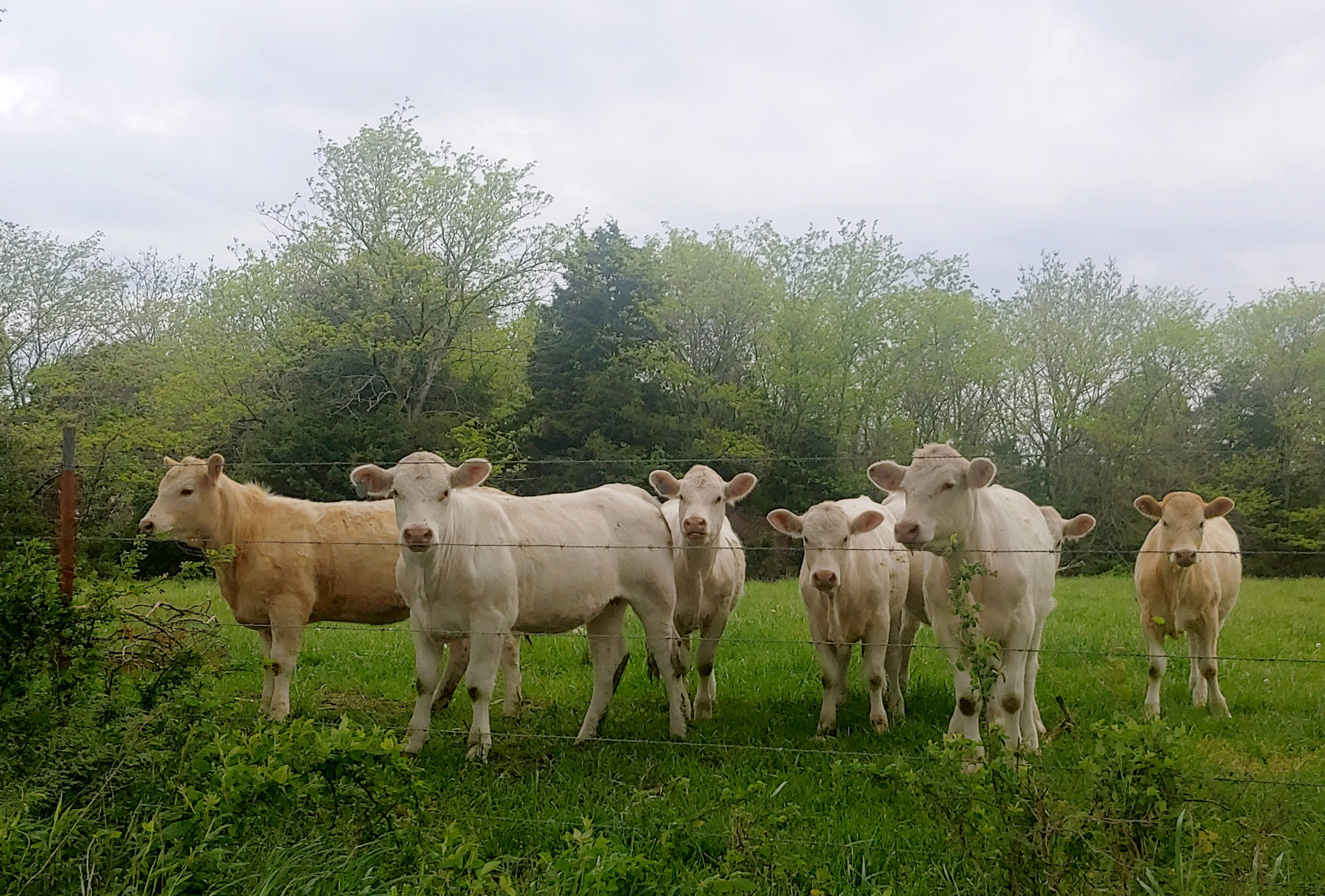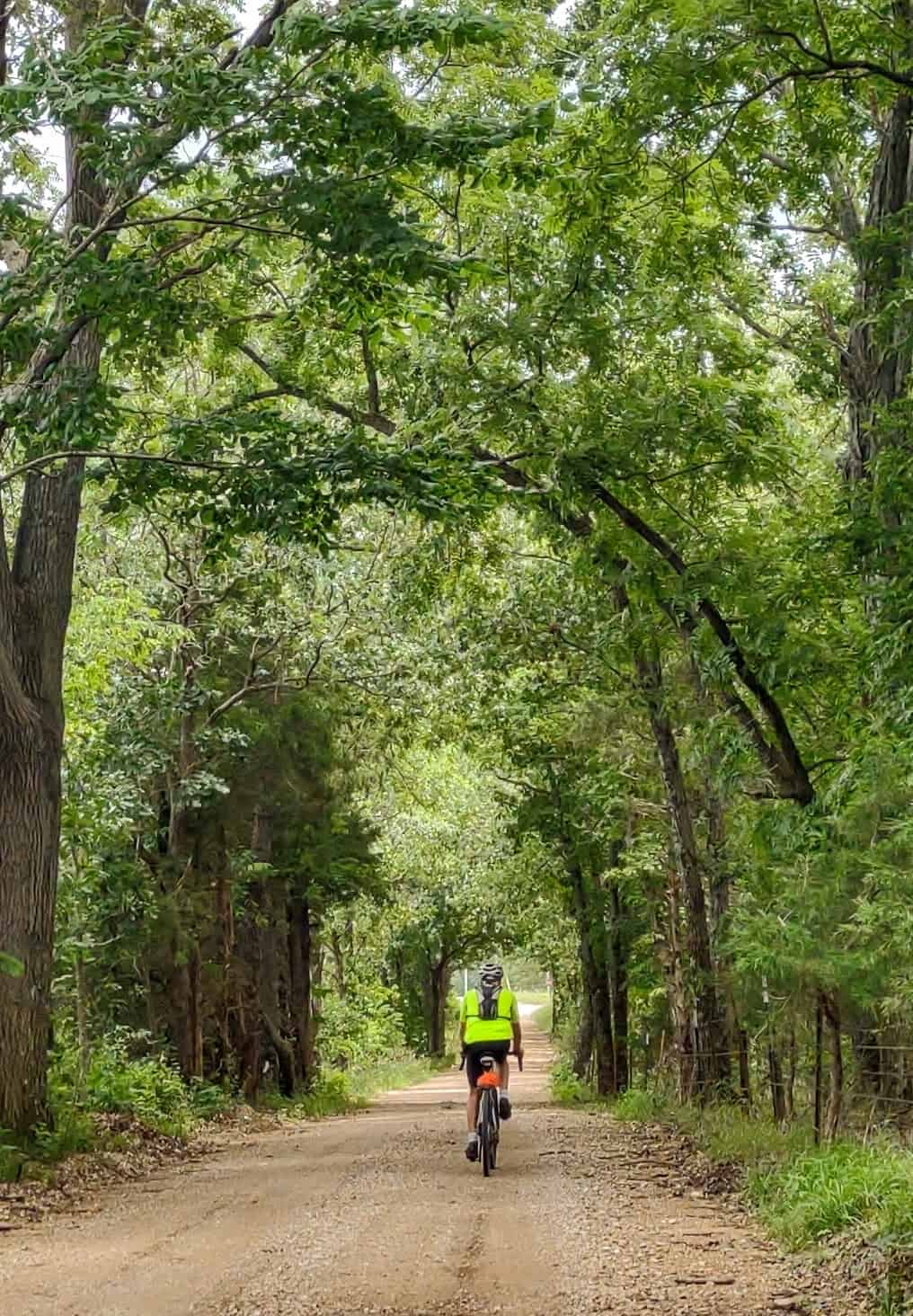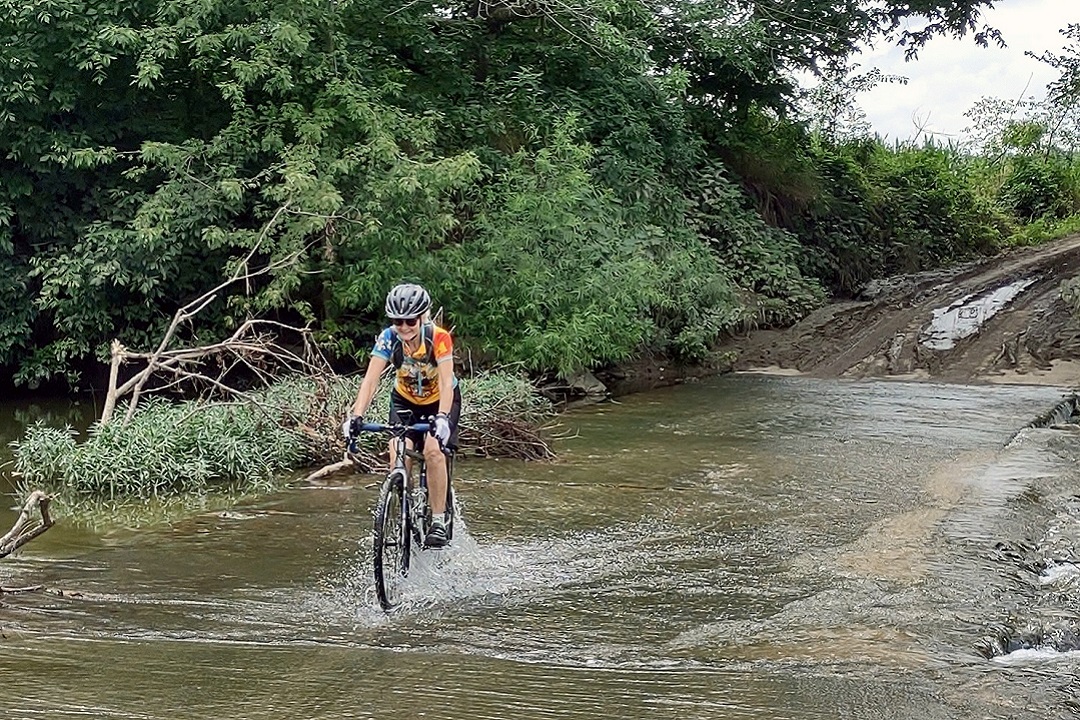As I heard the gravel crunch under my wheels and watched a deer skitter into the woods, I imagined how the scene could have looked much the same to travelers who traveled by stagecoach in the 19th century.
I was riding the Butterfield Stage Experience, a gravel biking route through southwest Missouri in the tracks of the historic Overland Mail Route of 1858. Running along quiet, low-traffic country roads and trails, the 250-mile route follows much of the original stagecoach trail from Jefferson City to Springfield.
“This was the longest overland stage route ever run in the history of the world,” said Brent Hugh, executive director of the Missouri Bicycle Federation.
John Butterfield of Utica, New York, developed the 2,812-mile trail from Tipton, Missouri, to San Francisco under a federal contract to run a transcontinental mail service. The so-called oxbow route skirted the Rocky Mountains, swinging south through Arkansas to Texas, across the desert southwest and north through California.
Butterfield spent a year and more than $1 million improving roads, building bridges, setting up stations, buying stock and coaches, and hiring men to run the stagecoach line. A maximum of 25 days was allowed for the trip, and Butterfield ran it twice a week in both directions from 1858 to 1861.
In contrast, Hugh and a small group of planners had a budget of zero dollars to map the gravel biking trail through Missouri. The idea for a bike route on the Butterfield came up as he talked with the Kaysinger Basin Regional Planning Commission to explore possible roads in Missouri for U.S. Bicycle Route 51, the Adventure Cycling Association’s planned north-south corridor from Minneapolis to New Orleans.
Hugh had heard of the Butterfield but didn’t know much about it.
“As we started checking it out, we realized that 160 years later this is still very much the experience you would have had back in 1860 taking the stagecoach. The countryside and the roads are very similar,” said Hugh.
The scenic route has six stages of 25 to 58 miles on well-maintained roads and trails. Car traffic is low but regular enough to keep the road surface fairly firm.

The 250-mile Butterfield Stage Experience.
Mac Vorce, executive director of the Warsaw Chamber of Commerce, worked closely with Hugh to plan the Butterfield Stage Experience.
“I tried to stick with the original stage route as much as possible. South of Warsaw, we couldn’t because it’s under Truman Lake now,” said Vorce. Other deviations avoided busy roads.
The stages link together towns where you can find lodging, camping, and restaurants. Hugh created maps on Ride with GPS for each stage, with points of interest marking the stagecoach stations, historic sites, and services along the way.
Riding in the path of an historic trail through the rolling Ozark hills appealed to all my notions of adventure. Some friends were up for the idea of riding the trail on weekends. Taking it on in segments gave us flexibility to choose the stage and direction each day based on prevailing winds, hills, and where we stayed.
Springfield to Bolivar
The Frisco Highline Trail on the gentle grades of the old railroad corridor seemed like a friendly place for our first ride in late winter. The 35-mile trail offers a quiet retreat much more like the historic Butterfield experience than the original route, which lies 5 to 10 miles east along Missouri 13, a busy state highway. The surface is primarily compacted crushed gravel; about a third of it is paved.
We started from the 7Cs Winery in Walnut Grove near the halfway point of the Frisco, where it crosses the Transamerica Trail. The winery offers free camping and is a great jumping off point to ride out and back in either direction.
On the way north to Bolivar we crossed 16 historic railroad bridges in Polk County. At 317 feet, the Highline Bridge is the longest.
At milepost 20, a sign recalls the Graydon Springs resort that welcomed visitors in the 1890s to “take the healing waters.” Now, the spot is a pleasant place to rest and enjoy the sounds of the nearby creek.
Twelve miles further on, we passed La Petite Gemme Prairie, home to more than 300 species of native grasses and wildflowers. It preserves a remnant of the tallgrass prairie that once covered a third of Missouri.
When heavy clouds progressed to rainstorms that night, the friendly folks at the 7Cs Winery invited us into their store after hours and set up a table for our potluck supper. It was one of many rural hospitality experiences we enjoyed on the Butterfield.
We rode the southern half of the Frisco Highline Trail the next day, starting from Springfield, where a delightful “Sculpture Cruise” features transportation-themed works by local artists.
In Willard, we stopped at the Frisco Bike Shop, which is built from two shipping containers welded together and with a rooftop deck added. Owners Cari and Matt Harrison originally thought of offering a mobile repair service on the trail.
“We were on this trail all the time helping people with flat tires and whatnot and we thought, man, we need a bike shop,” said Cari. In addition to bike rentals, sales, and repairs, the Harrisons offer shuttle service on the Frisco.
Wheatland to Bolivar
Livestock provided the entertainment on this stage. Just past the Yoast station monument near the halfway point, a little herd of sweet-faced white cows came out to greet us.

Curious cows. (Janice Branham)
Jenn Bradshaw was the first person to pedal the whole Butterfield Stage Experience on a test ride in 2019. While climbing past a field where cows were grazing, she noticed one lying on the ground with its legs sticking out. “I thought it was dead,” Bradshaw said. “As I was riding by, all of a sudden a baby cow came out.”
Further on, we passed a farm where baby goats were jumping. They inspired me to kick up the energy on the next few hills.
Warsaw to Wheatland
From the Warsaw station, this stage starts with a pleasant cruise along the bike path through Drake Harbor and across the 1904 Joe Dice Swinging Bridge. Named for the self-taught engineer who built it, the bridge is the last of 15 swinging bridges that once crossed the Osage River.
The easy part doesn’t last long. This stage is the longest and the hilliest, with more than 4,000 feet of climbing over 58 miles through Hickory County. It’s also the most remote. There was just one convenience store and very few cars passing when we rode it.
“It really lets you feel how hard it was to travel back in the day,” Vorce said. “You’re out there by yourself. It’s one of the last frontiers.”
While the climbing towards Wheatland felt endless on a hot day, the experience on the stagecoach to California was far more hellish. Passengers paid $200 for a 25-day trip, going through dangerous Comanche and Kiowa territory in the south. The seats faced each other so close together that they had to alternate their knees. Raphael Pumpelly, a geologist and explorer, wrote about his journey on the Butterfield.
“The fatigue of uninterrupted traveling by day and night in a crowded coach, and in the most uncomfortable positions, was beginning to tell seriously upon all the passengers, and was producing in me a condition bordering on insanity.”
However many hills we climbed, a bike ride on a sunny day with a shower, a good meal, and a bed at the end had to be infinitely more pleasant.
Cole Camp to Warsaw
Cole Camp has a charming downtown and several buildings that pre-date the Civil War. One of the oldest communities in the region, its earliest settlers arrived in 1829.
The stage from Cole Camp to Warsaw is the shortest at 25 miles — more than enough as we pedaled through rain most of the day. A fair amount of this segment was paved, saving us from slogging through a lot of wet gravel.

A tunnel of trees in Cole County. (Janice Branham)
Approaching Warsaw, we found ourselves on a fun little stretch of singletrack through the forest in the Truman Lake Mountain Bike Park. The wet early spring foliage glowed a cheery green under the lightening sky as the rain subsided.
Part of the fun is the treasure hunt for stone monuments marking the sites of the original stations, where drivers fed the horses or hitched up a fresh team. The Warsaw monument is near the Benton County Courthouse, across the street from one of the few Butterfield Stage stations still standing in Missouri. Originally a tavern and hotel, the building now houses Reser Funeral Home.
Cole Camp to Tipton
We sailed east along this stretch with the wind at our backs. There were a few steep climbs, but most of the hills were rollers that were fun to bomb up and down.
About 5 miles west of Florence, we crossed Haw Creek in water halfway to our knees after two days of rain. It was manageable, but I wished for a dry pair of socks.
One of the two food stops on this stage, the Ambush Family Restaurant in Florence dates back to 1852, when it was a saloon and bordello. We enjoyed its brand of country-style comfort food.
Outside Tipton City Hall, we found the monument marking the old train station site, where Butterfield transferred the mail to the stagecoach. A railroad town built when the Pacific line was extended from Jefferson City, Tipton was just a few months old when the first Overland Mail stagecoach left the station in September 1958.
Tipton to Jefferson City
We rode this stage on a cool day in July under clouds that threatened storms but never delivered. Thick stands of Queen Anne’s Lace sprinkled with yellow black-eyed Susan and purple thistle lined the roads. While this stretch was not on the stage line since the Pacific Railroad carried the mail to Tipton, it has all the historic charm and adventure of the stagecoach trail.
California, the Moniteau County seat, has eight buildings listed on the National Register of Historic Places. Completed in 1868 and still in use today, the Moniteau County Courthouse is one of the oldest courthouses in Missouri. Finke Opera House has entertained citizens since 1885 with music, vaudeville, movies, and theater. East of California, we passed several old barns and an abandoned cemetery where gravestones of Swiss immigrants date back to 1874.

A stone marking the old Overland Mail Route. (Janice Branham)
Seventeen miles west of Jefferson City, a steep descent leads to a low-water crossing over Moreau Creek. After two days of rain, a few inches of water flowed over the road, just enough to add a little thrill to the ride. The road on the east side of the ford is steep, rugged, and closed to cars, but we hiked our bikes up with no trouble. Ten miles further on, the Jefferson City Greenway took us safely past busy highways on our way to the Capitol.
Finding Your Way
You can find a link to each stage of the route on Ride with GPS at mobikefed.org/butterfield, along with ideas for bike routes that connect the Butterfield to the Katy Trail, Rock Island Trail, and other cities in the region.
Cell service is spotty on the trail, so it’s best to download the maps to your smartphone or GPS device ahead of time. Limited shuttle services are available from the Frisco Bike Shop and Deer Rest Campground in Warsaw. We did our own shuttle for each day’s ride.
We enjoyed riding the trail on our weekend stage rides. A straight-through ride over several days is another way to go. Some have even done it non-stop; Jim Phillips of Springfield covered it in just over 25 hours. Several gravel bike races overlap the Butterfield route, such as the Pomme de Tour in Hickory County, the Epic 150 in Benton County, and the IronHorse on the Frisco Highline Trail.
However you take it on, the Butterfield Stage Experience offers history, adventure, and lots of fun. Grab some friends and pedal on!
Author: Janice Branham is a regular contributor to Terrain Magazine.
Top Image: The author making the low water crossing at Moreau Creek by Barry Branham.


Leave A Comment